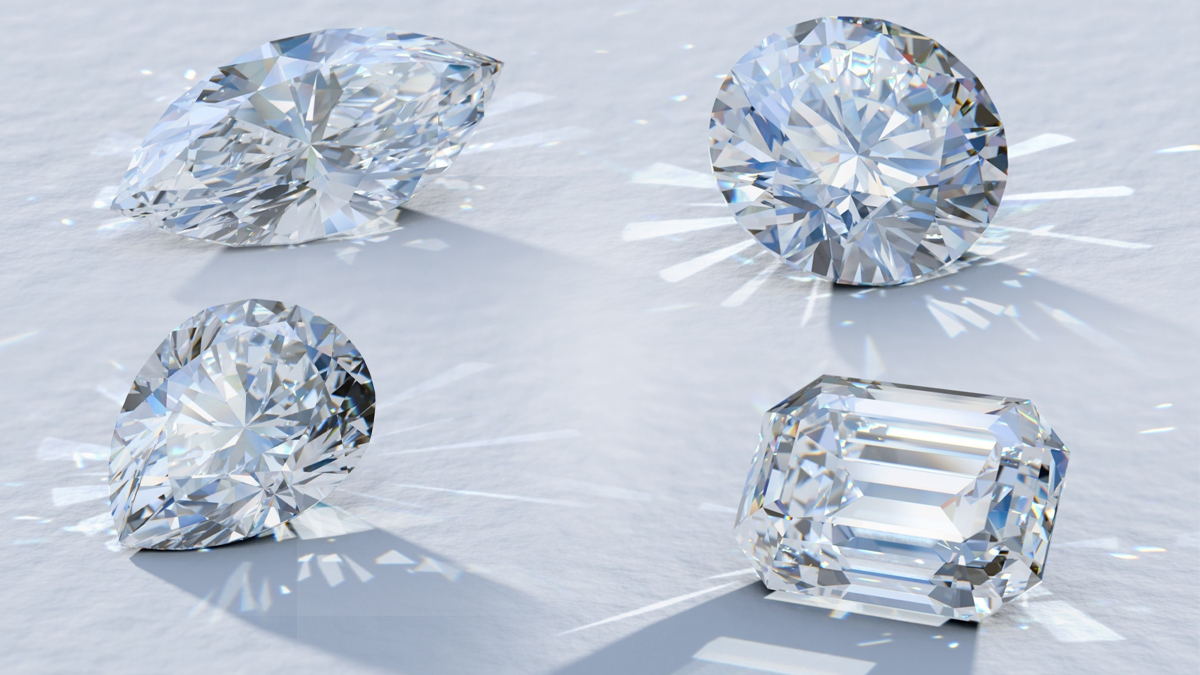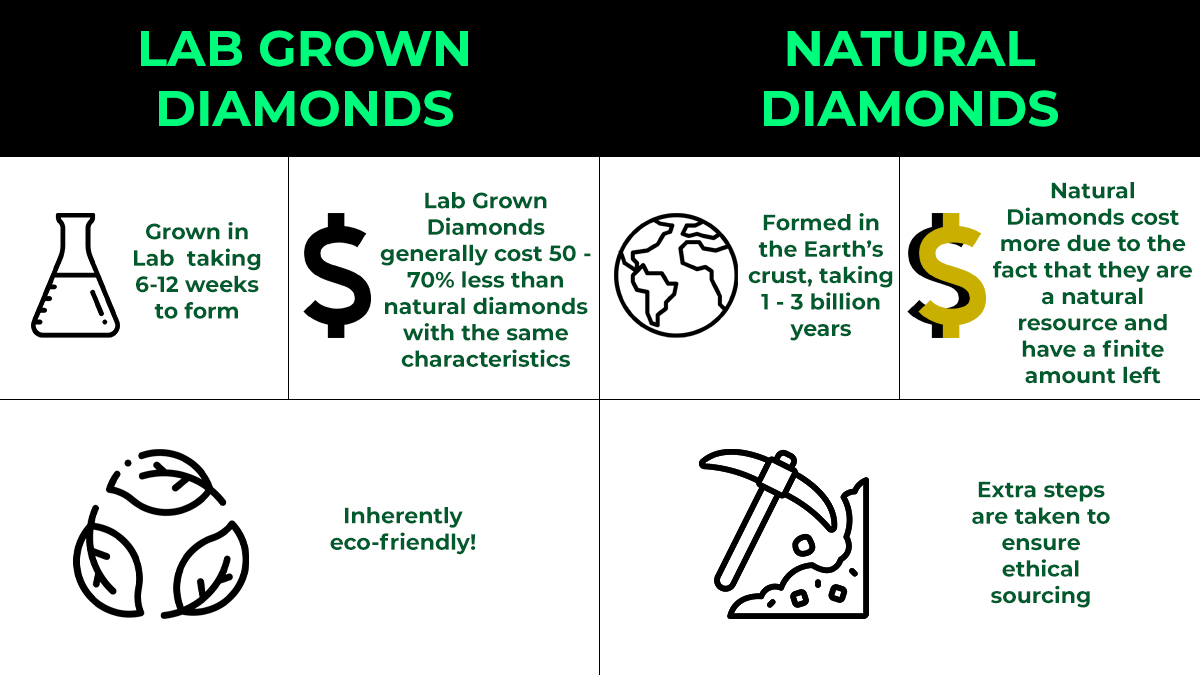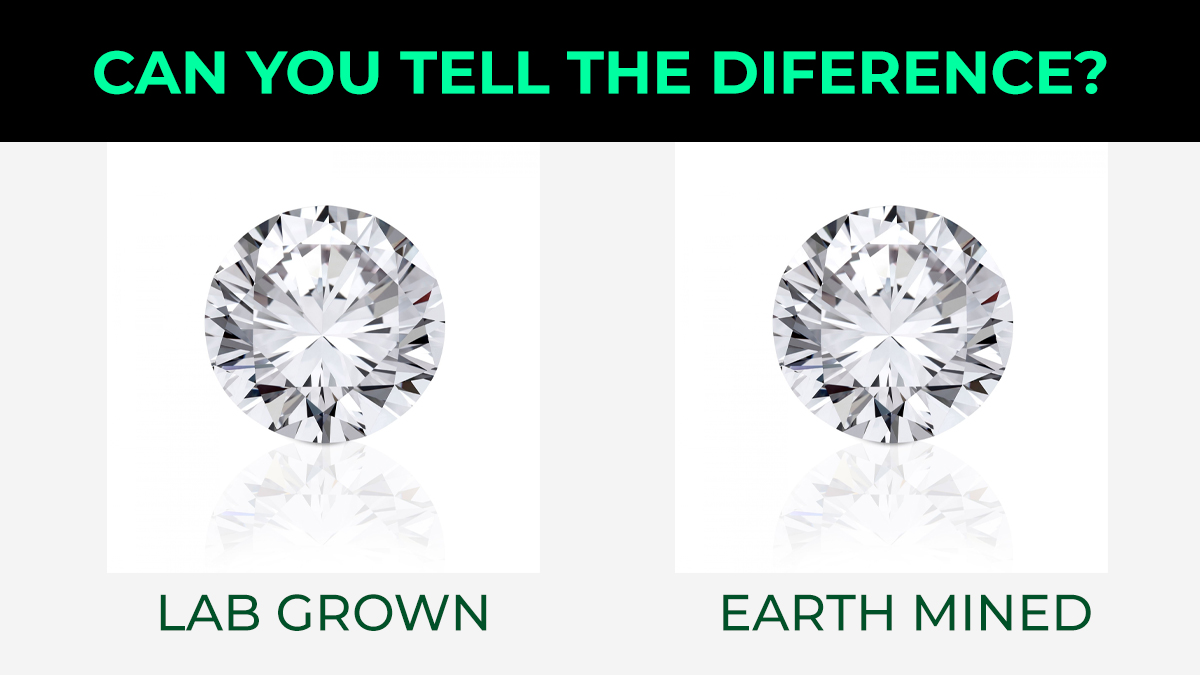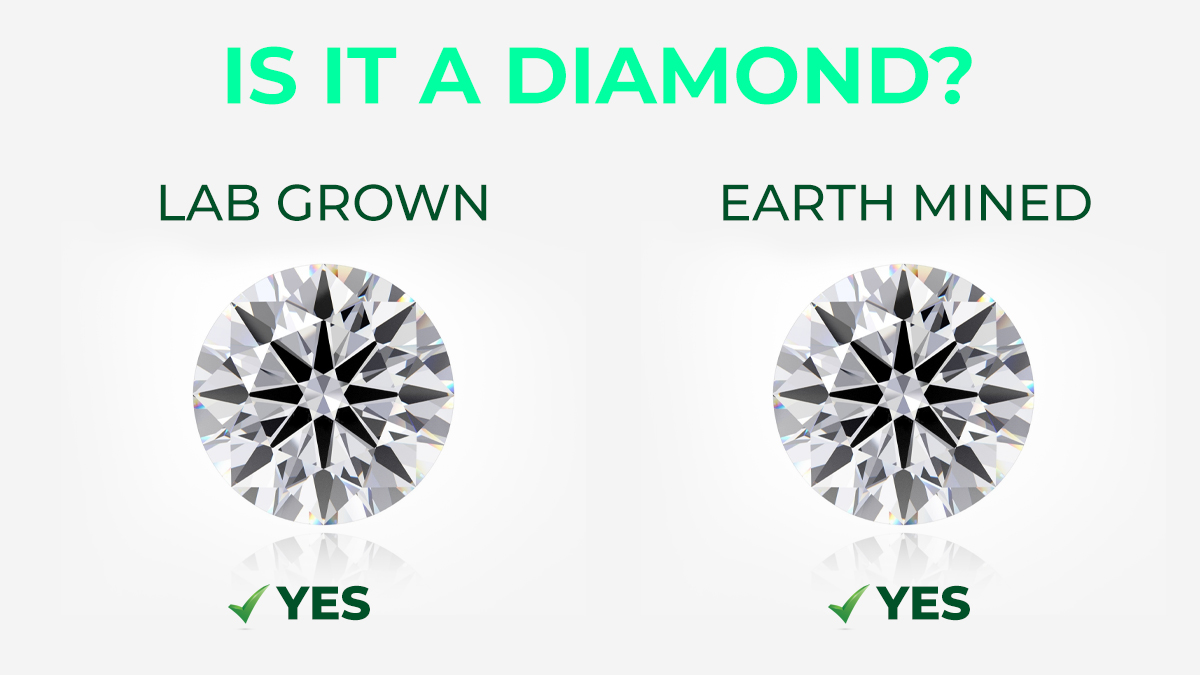When shopping for diamond engagement ring, wedding bands or everyday fine jewelry. There are many common misconceptions and questions comes in a mind.
What is lab grown diamond, is it the same as natural diamond? whether to purchase lab grown diamonds or naturally mined diamonds. The average person has limited knowledge about diamonds. Don't worry, we're here to explain it to you in terms that you and your wife will understand.
Synthetic diamonds and those found in nature have identical physical and chemical characteristics. Both appear identical under a microscope and have the same hardness and refractive index.
Lab grown diamonds are made in a laboratory using a process called chemical vapor deposition (CVD). Natural diamonds, on the other hand, are mined from the Earth. This is the only difference between them.
Lab grown diamonds are often priced lower than natural diamonds in the diamond industry. This is because they require less labor and resources to produce. For those looking for an environmentally-friendly alternative, lab grown diamonds are the way to go. They are also a great option for those on a budget, since they can offer great savings over natural diamonds.
The decision of what type of diamond to buy is personal. It depends on individual preference, budget, and lifestyle.
Origin

The main difference is their origin between natural and lab grown diamonds. Over billions of years, deep beneath the surface of the earth, a diamond is formed naturally. As a result of extreme heat and pressure, natural diamonds are formed. It is then brought to the surface through volcanic eruption and is found in volcanic rock formations called "kimberlite pipes."
After that, the diamond waits patiently to be mined by skilled mining engineers. Lab created diamonds are grown in a laboratory. This artificial setting mimics the conditions, properties and structure of natural diamonds.
The Federal Trade Commission (FTC) requires that the origin of a product be made clear. They suggest using the word "diamond" and one of three phrases: "lab grown," "lab created," or "manufacturer." The disclosure should be "clear and conspicuous."
Lab grown diamonds are created using two processes: CVD (chemical vapor deposition) and HPHT (high pressure and high temperature). Both processes are successful at producing genuine, high-quality diamonds that are exact replicas of those found on earth mental.
Pure carbon atoms are compressed inside a metal cube. This process is called HPHT (High Pressure High Temperature). Intense heat and pressure are then applied using electric pulses. The carbon eventually disintegrates and create diamonds.
Any metal traces found in a diamond treated with HPHT will be minute and typically undetectable to the naked eye. A diamond seed is placed in a chamber for chemical vapor deposition (CVD). It is heated to an extremely high temperature and exposed to a gas containing carbon.
Carbon gas ionizes over a few weeks. This causes particles to stick to the diamond slice. Eventually, these particles form a complete diamond.
Most experts agree that HPHT diamonds are better quality than CVD diamonds. CVD diamonds are fast growing, which results in spotty internal marks and graining. The CVD process is often seen as superior to other methods for producing diamonds. This is because it is faster, more cost-effective and requires less energy.
Price

Another difference between lab grown diamond and natural diamonds is their price. In a general comparison, lab grown diamonds can typically cost 50-60% less than naturally mined diamonds. This percentage difference is based on a few factors.
Demand for mined diamonds is much higher than for lab-grown diamonds. The market is regulated, preventing too much supply from entering at once. This helps keep the price stable.
People admire the romantic origin stories of naturally produced diamonds. These diamonds are rare and precious. They are also considered nature's most stunning and alluring creation.
For lab-grown diamonds, their awareness is much lower, but they’ve been fast increasing in popularity. The process to make them has also gone through repeated innovations and advanced technologies that have drastically reduced the production costs.
For example, consider a 1 carat diamond with an H color, SI1 clarity and excellent cut. The natural, mined version would cost around $6,100. The lab-grown version, however, would cost around $2,300 for comparable or even better quality.
Quality

Lab grown diamonds are real diamonds. A common concern among buyers is whether lab-grown diamonds graded can match the strength of natural ones. The two are identical when put side by side. In fact, laboratory grown diamonds frequently have tiny inclusions and flaws, much like natural diamonds.
Diamonds created by the CVD process usually contain small amounts of graphite or other minerals. Diamonds created through the HPHT process often contain small inclusions of the metal flux they were grown in.
Lab-grown diamonds are very similar to natural diamonds. The 4Cs color, clarity, cut, and carat weight are used to grade both types of diamonds' quality. This is the same system used for both natural and lab-grown diamonds.
A lab-grown diamond is ideal if you want a high-quality stone at a lower price. It also has a lower impact on the environment.
Taking and have finite t

Lab grown diamond doesn't have the negative impact on the environment that comes with naturally mined diamond. The process of mining can damage the environment and, in the area, where the mining is taking place. It can also have a negative impact on human beings, water and air pollution.
Lab grown diamonds chemical makeup are made in a laboratory. No mining is required. Therefore, they are referred to as eco-friendly diamonds.
Lab-grown diamonds come in many shapes and sizes. This is unlike natural diamonds, which are limited to their size and shape in the ground. They are also more affordable than natural diamonds.
Lab grown diamonds are created quickly. In fact, they take a fraction of the time it takes to mine a diamond. Additionally, they come in a variety of cuts and colors.
Lab grown diamonds are also certified by the Gemological Institute of America (GIA) just like natural diamonds. This certification ensures that the quality of the diamond is good and that the diamond is genuine.
Conclusion

There is no visual difference between these two diamonds. Lab grown diamonds are composed of the same atoms as natural diamonds. Thus, they have the same physical and chemical properties. Therefore, they are just as strong and durable.
Both lab-grown diamond and naturally mined diamond can be sustainable and cost effective. It takes specialized equipment to identify the difference between lab grown diamond and naturally mined diamond.
Lab grown diamonds are moral and ethical choice that is better for the environment and your wallet. Old-fashioned mined diamonds have a colorful past and an old-world charm. Which diamond are you going to choose?
Deciding to purchase a lab grown diamond is important. To ensure the diamond is of quality, only obtain it from a reliable jeweler. This jeweler should be dedicated to trading laboratory grown diamonds that come from an environmentally friendly source.

